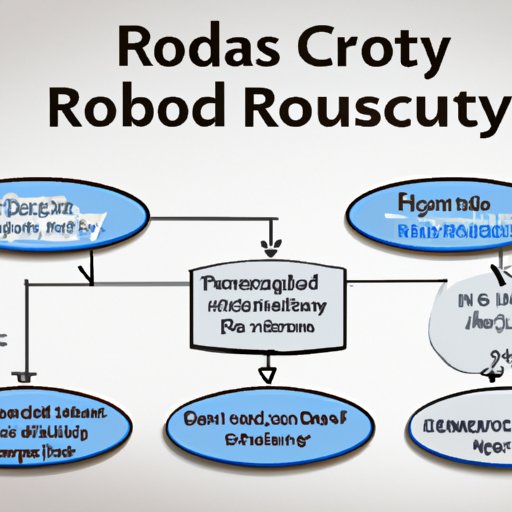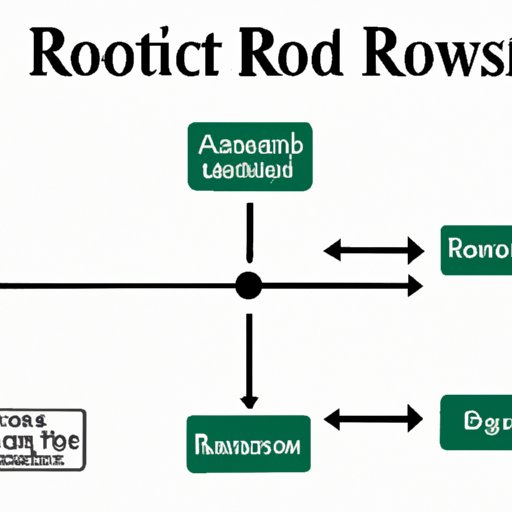
Introduction
Root Cause Analysis (RCA) is a process used to identify and address the underlying causes of a problem or issue. By identifying the root cause, organizations can prevent future problems and improve their operations. In this article, we will go over the basics of RCA, including its importance and process. We’ll also delve deeper into its components, how it can help identify underlying issues, and provide readers with a step-by-step guide for conducting RCA.
A Beginner’s Guide to Root Cause Analysis: Understanding the Process and Benefits
RCA is a structured method used to identify the cause of a problem by digging deeper into the underlying issues contributing to it. This method is used by many organizations to help them solve problems, prevent future issues, and make informed decisions.
The key benefits of conducting RCA include improving the quality of products and services, reducing costs, streamlining operations, and preventing future issues. RCA can help organizations identify underlying issues that were not initially apparent, which may have contributed to the problem.
The process of RCA includes a few key steps. First, it involves defining the problem or issue. Second, it involves gathering and analyzing data to identify the underlying causes of the problem. Third, it involves developing and implementing solutions to address the root cause, rather than just the symptoms of the problem. And finally, it involves monitoring and evaluating the effectiveness of the solution over time.
The Importance of Conducting a Root Cause Analysis for Business and Industry
RCA is essential for businesses and industries because it helps them identify the underlying causes of problems, and develop solutions that address the root cause, rather than just the symptoms. When organizations fail to address the root cause of an issue, it can lead to a recurrence of the problem and added costs for the organization.
There are many examples of how RCA has helped businesses improve their operations. For instance, a major automotive company conducted RCA after discovering a number of customer complaints related to the braking system of one of its models. The analysis revealed that a supplier had provided faulty parts, and the company was able to implement a solution to address the issue, preventing future problems. Had the company not conducted RCA, it would have continued to produce faulty cars, which would have led to more customer complaints and increased costs.
Unpacking Root Cause Analysis: A Comprehensive Overview
RCA can be broken down into five main components: problem identification, data collection, cause analysis, solution implementation, and monitoring and evaluation.
Problem identification involves defining the problem or issue clearly and precisely. This step is essential because it helps organizations focus on the specific issue, rather than symptoms or consequences.
Data collection involves gathering all relevant data about the problem or issue. This can include quantitative and qualitative data, such as statistics, customer feedback, and employee input.
Cause analysis involves analyzing the data to identify the underlying causes of the problem. This step can involve the use of various tools, such as fishbone diagrams, flowcharts, and Pareto charts.
Solution implementation involves developing and implementing solutions to address the root cause of the problem. This step requires careful planning, taking into consideration potential risks and challenges.
Monitoring and evaluation involve tracking the effectiveness of the solution over time. This step helps organizations identify whether the solution has been successful in addressing the root cause of the problem, and make adjustments as necessary.
How a Root Cause Analysis Can Help You Identify and Address the Underlying Issues
One of the key benefits of conducting RCA is that it can help organizations identify the underlying issues contributing to a problem. By addressing the root cause of the problem, organizations can prevent future issues from occurring.
For instance, let’s say a company experiences a high number of customer complaints related to a particular product. Conducting RCA reveals that the root cause of the issue is a flaw in the product design. By addressing the design flaw, the company can prevent future complaints and improve customer satisfaction.
The Role of Root Cause Analysis in Preventing Future Problems
RCA is not just a tool to fix current problems; it is also a tool to prevent future ones. By addressing the root cause of a problem, organizations can prevent it from happening again.
For example, a software company conducts RCA after a bug is discovered in one of its products. The analysis reveals that there was a miscommunication between the developers and designers, which led to the bug. By addressing the miscommunication and improving the development process, the company can prevent similar bugs from occurring in the future.

Root Cause Analysis Made Simple: Step by Step Guide
Here’s a simple guide for conducting RCA:
- Define the problem or issue
- Gather all relevant data about the problem or issue
- Analyze the data to identify the underlying causes of the problem
- Develop and implement a solution to address the root cause of the problem
- Monitor the effectiveness of the solution over time
It’s important to note that RCA is not a one-time process. It requires ongoing monitoring and evaluation to ensure that the solution is effective over time.
Solving Complex Issues with Root Cause Analysis: Learn From Industry Experts
RCA can be used to solve complex issues, and industry experts have used this process to great effect. One example is the aviation industry, which has a rigorous RCA process to investigate accidents and incidents. By identifying the root cause of an accident, the industry can make changes to prevent future incidents from occurring.
Another example is the healthcare industry, which uses RCA to investigate medical errors and improve patient safety. By identifying the root cause of a medical error, healthcare organizations can implement solutions to prevent similar errors from occurring in the future.
Conclusion
Root Cause Analysis is a powerful tool for identifying the underlying causes of a problem or issue. By addressing the root cause, organizations can improve their operations, reduce costs, and prevent future issues from occurring. With a proactive approach to problem-solving, businesses can stay ahead of the curve in an increasingly competitive marketplace.
We encourage readers to try the RCA process themselves, and use the step-by-step guide provided in this article. With a little practice, anyone can become proficient in RCA, and make informed decisions based on the insights gained from this process.




